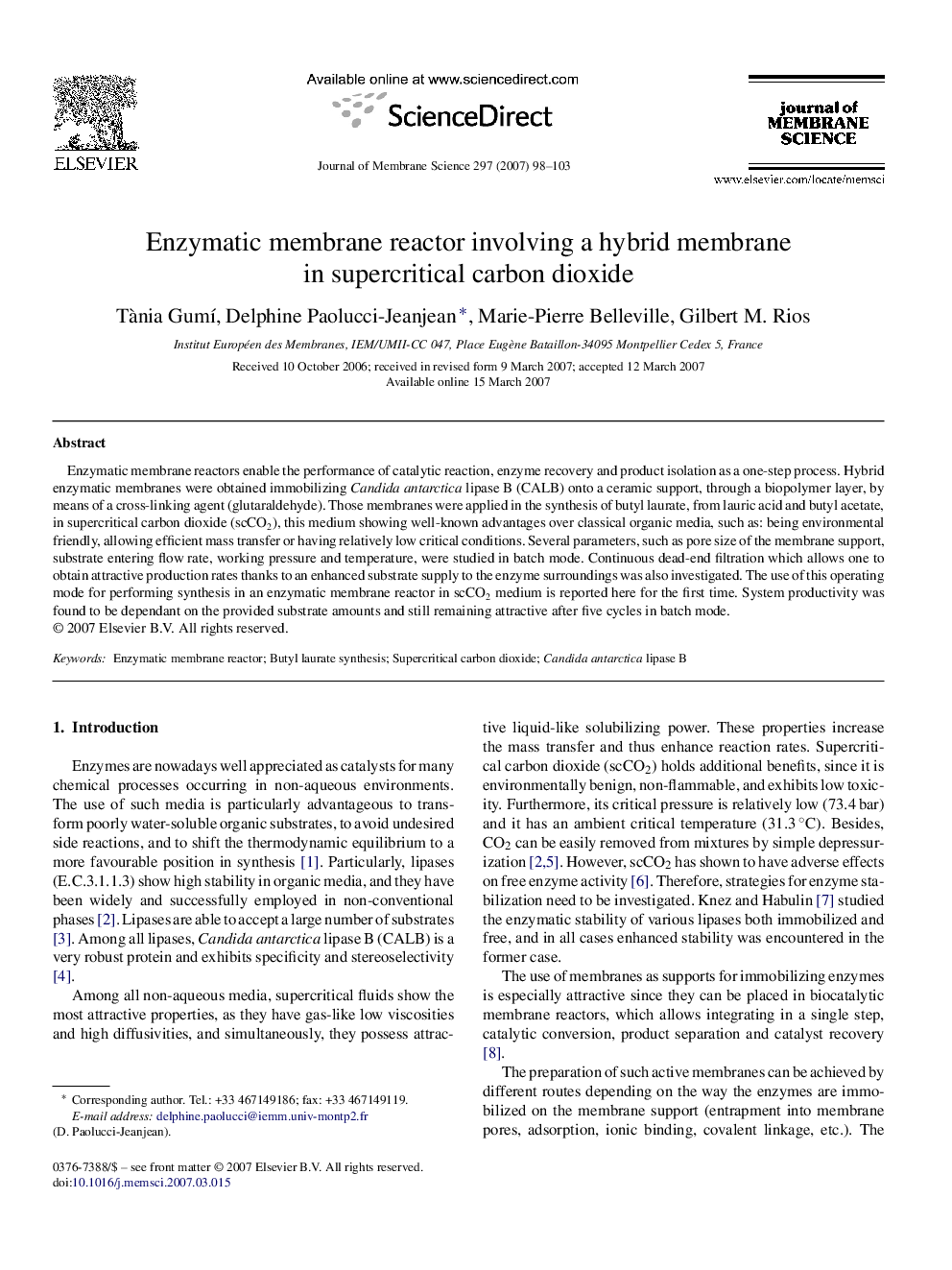| Article ID | Journal | Published Year | Pages | File Type |
|---|---|---|---|---|
| 638595 | Journal of Membrane Science | 2007 | 6 Pages |
Enzymatic membrane reactors enable the performance of catalytic reaction, enzyme recovery and product isolation as a one-step process. Hybrid enzymatic membranes were obtained immobilizing Candida antarctica lipase B (CALB) onto a ceramic support, through a biopolymer layer, by means of a cross-linking agent (glutaraldehyde). Those membranes were applied in the synthesis of butyl laurate, from lauric acid and butyl acetate, in supercritical carbon dioxide (scCO2), this medium showing well-known advantages over classical organic media, such as: being environmental friendly, allowing efficient mass transfer or having relatively low critical conditions. Several parameters, such as pore size of the membrane support, substrate entering flow rate, working pressure and temperature, were studied in batch mode. Continuous dead-end filtration which allows one to obtain attractive production rates thanks to an enhanced substrate supply to the enzyme surroundings was also investigated. The use of this operating mode for performing synthesis in an enzymatic membrane reactor in scCO2 medium is reported here for the first time. System productivity was found to be dependant on the provided substrate amounts and still remaining attractive after five cycles in batch mode.
